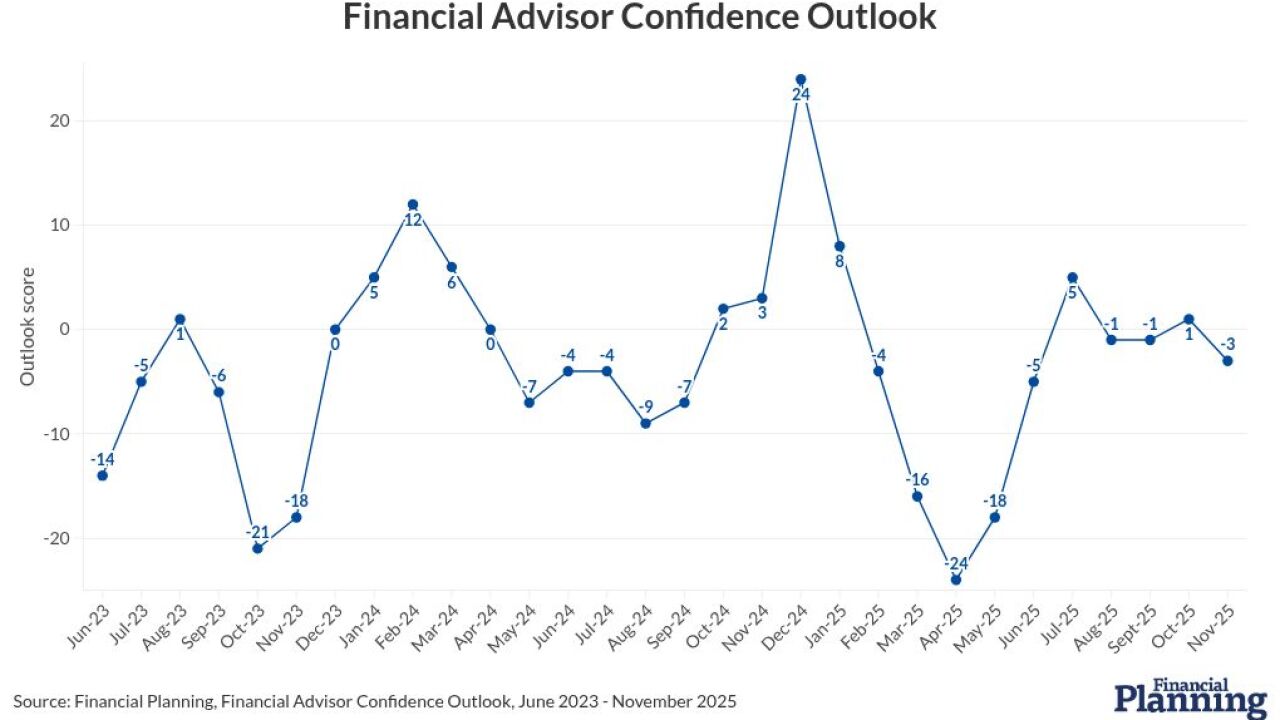Advisory firms are beginning to question whether there's too much tech in their tech stack. Studies reveal that some advisor tools have very low usage rates, inadvertently creating tech debt for firms instead of tech efficiencies.
"I find that the term is worthless when people talk about, 'Oh, what is your tech stack?' It's a stupid thing to talk about anymore," said Andrew Evans, CEO and founder of
Evans is referring to the all-in-one tech platforms that many of the largest wealthtech platform providers commonly offer. He likened it to every new car now having CarPlay and a backup camera.
"Everybody just started to have the exact same stuff. They had to get it because everybody else had it," he said. "The advisor's tech spend keeps going up, but they're only using maybe 25% of everything that it can do."
READ MORE:
An
"Many of my clients have moved towards your all-in-one type places, like Orion, Black Diamond or [another] self-proclaimed all-in-one … and they don't use it all," said Bryce Carter, senior manager and wealth technology strategist at F2 Strategy, a wealthtech consultant based in Chicago. "Trying to be all things to all people and have an all-in-one solution, you potentially, likely aren't great at all of them together, so concentrating your focus on the things that you're really good at and really leaning in — that is a trend that I'm seeing."
There is one caveat to this, however. Carter said smaller firms, typically with under $500 million in assets under management (AUM), most often need an all-in-one platform until they grow large enough that they then would require more customization. Customizing tech is costly — another reason smaller firms stick to full-service tech platforms.
F2 Strategy estimates that it costs $1 million to $5 million for a firm with under $2 billion in AUM to implement vendor tech while filling in gaps with proprietary tech, according to a
"When we come in and do a technology assessment, I typically will find about a 10% to 20% waste on their tech budget," said John O'Connell, founder and CEO of The Oasis Group, a Monroe Township, New Jersey-based technology consultant. Some firms are "bleeding money because you've got multiple solutions doing the same thing. They don't talk to one another."
That tech "waste" that O'Connell describes typically amounts to tens of thousands of dollars a year for a firm.
"We've gotten to a point where people need to get a handle on that data and understand: Are we really using this product or are we not? And if we're not using it effectively, we should really think about, do we want to keep it and double down or cut it loose?" he said.
READ MORE:
Joel Bruckenstein, producer of the Technology Tools for Today (T3) Conference, argued that it's more about a lack of vendor oversight than tech stacks getting too large.
"I don't think it's that the tech stack is too fat," he said. "I think advisors struggle to do their due diligence on the various vendors and vendor management are the issues."
Some industry tech leaders argue that firms should audit their tech stack at least once a year, if not more.
READ MORE:
"Instead of jumping right into this new shiny object and exciting piece of technology, sometimes you need to see, maybe this is already a feature that just hasn't been pushed from another product" that the firm already has implemented, said Jordan Hutchison, vice president of technology and operations at RFG Advisory. "That's why I feel you've got to review what you have at least every year. And review the adoption because some of these products, the adoption rates are fairly low."
For this reason, Hutchison said RFG Advisory uses the tech-stack strategy of "one product per category," meaning one vendor per grouping, such as using one CRM platform for all data reporting that also has added features if customization is needed.
But Hutchison added that it's also critical for firms to keep a constant eye on vendor competition and maintain a "conviction to change" vendors if it becomes clear the existing adoption rate is not working. He noted a good adoption rate is generally at least 80% of a firm's core tech platforms.
READ MORE:
"That's another hot button right there, in that some people will stay with a product just because of the difficulty to change can be a lot," he said. But, "You 100% do need to have some kind of process around making sure you don't have tech debt, where you're just paying for a piece of technology that no one uses."





